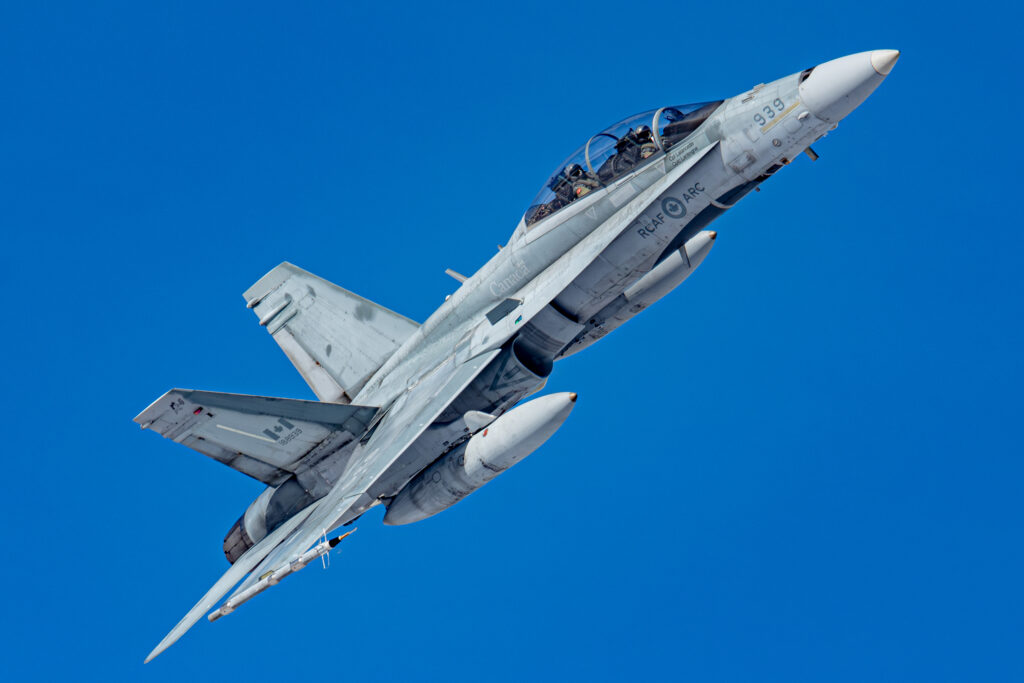For the second year in a row, the Royal Canadian Air Force deployed to the United Kingdom to participate in Cobra Warrior (CW), a biannual exercise that draws together NATO members and partner nations to conduct a range of mission sets aimed at emulating real world scenarios.
This year’s only iteration – the planned March exercise was cancelled – saw aircraft from the Finland, Poland, Norway, the United States, and Canada alongside those of the U.K.
The RCAF detachment of eight McDonnell Douglas CF-188 Hornets was comprised of members of 409 Tactical Fighter Squadron from 4 Wing Cold Lake, Alta., supported by a Lockheed Martin CC-130H Hercules aircrew and maintainers from 435 Transport and Rescue Squadron, based at 17 Wing Winnipeg. The Hercules provided aerial refueling to Canadian and Finnish Hornets during the exercise, though it was damaged during a bird-strike in the first week when what was suspected to be a buzzard punched a large whole in the aircraft’s wing.
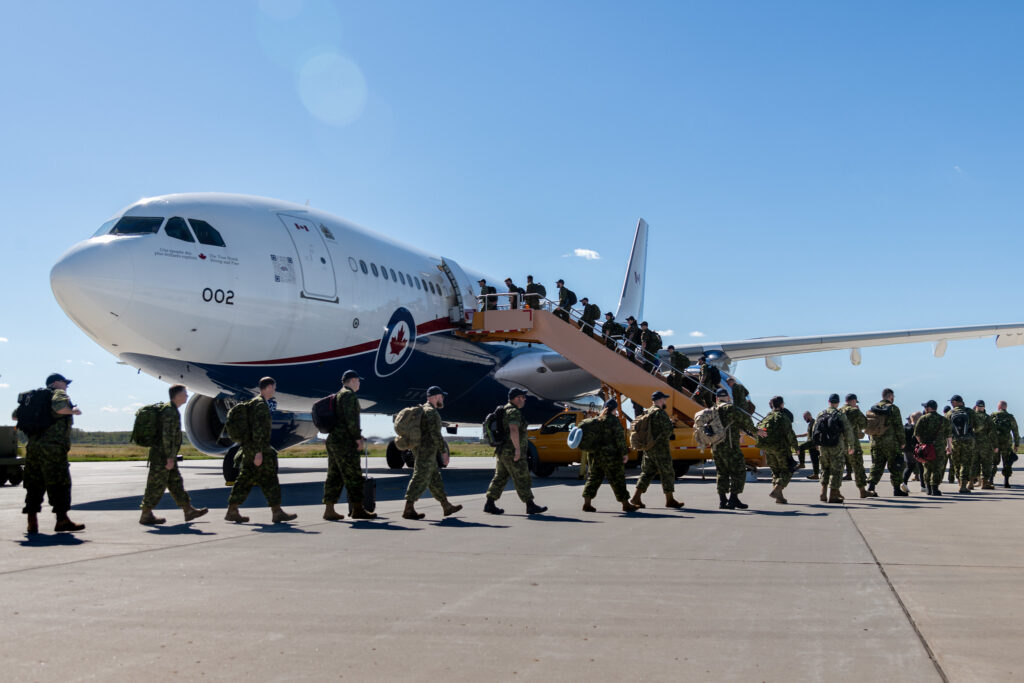
The detachment was based entirely at Royal Air Force (RAF) Waddington, the home of Cobra Warrior; last year, when 433 Tactical Fighter Squadron participated, the Airbus CC-150 Polaris tanker flew from RAF Lossiemouth, Scotland.
Captains Shawn “Gazer” Veinot and Steavnon “Petrie” Taylor, two Hornet pilots deployed as part of Cobra Warrior, sat down with Skies to talk about the exercise.
“409 Tactical Fighter Squadron [is] the high readiness squadron for the Royal Canadian Air Force at this time,” said Gazer. “We are on [the exercise] to help with the deterrence and defence of central and eastern Europe as part of Operation Reassurance. “It’s a great opportunity for us to integrate with our allies and perform duties in a large force exercise as part of a coalition.”
“These [large exercises] don’t happen often so for us to get a chance to be in a place where there’s over 50 aircraft in the airspace at the same time, and get used to working with other counties in such a dynamic environment is very beneficial for everybody that’s learning to operate tactically,” explained Petrie.
That training value is applicable to the most junior pilots on the squadron, qualifying as mission commanders, and experienced Hornet operators.


While some exercises may see a hybrid of squadrons deploy, or squadrons cycle in and out, Cobra Warrior was solely a 409 Squadron affair, Gazer said. “Everyone here is a member of [the squadron] or various affiliates that come to support us, like our public affairs officer, our padre and some PSP (Personal Support Program) who work on our physical fitness programming and social events.”
Upgrading the Hornet
The RCAF’s CF-188 fleet is undergoing an upgrade program known as the Hornet Extension Project (HEP) to prolonging the service life of 84 aircraft through to 2032. The first stage, HEP1, added ADS-B (Automatic Dependent Surveillance-Broadcast) to the fleet, which ensures the aircraft are compliant with new airspace regulations, as well as improved GPS navigation and new radios.
“ADS-B allows us fly, especially here in Europe, both VFR (visual flight rules) and under instrument rules. We would still be able to execute our missions at Cobra Warrior without the ADS-B component, but it allows us to safely transit to and from the [exercise] air space,” said Gazer.
As the system was also required to bring the fighters across the Atlantic Ocean, all eight CF-188s deployed to RAF Waddington were to HEP1 standard.
Gazer and Petrie told Skies that from a pilot’s perspective HEP1 adds another system for crews to learn and monitor. Though it doesn’t significantly reduce any cockpit workload, it does improve situational awareness and flight safety.
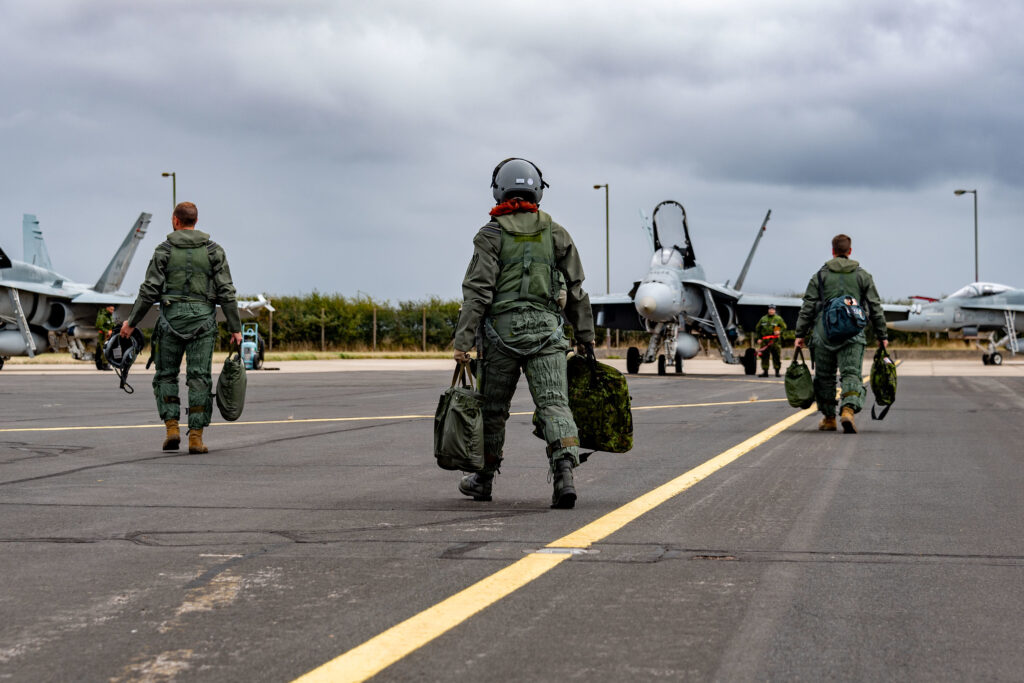

The second phase of the program, HEP2, will give the Hornets more combat capability, most notably in the form of Raytheon’s APG-79(V)4 Active Electronically Scanned Array (AESA) radar and AIM-9X Block II Sidewinder and AIM-120 air-to-air missiles. Thirty-six Hornets will receive the HEP2 upgrade. The first six aircraft were delivered at the start of October and initial operational capability was declared in early October.
The enhanced combat capability will make the CF-188 a far more potent platform and allow it to continue to integrate effectively amongst a coalition in future full spectrum operations, the two pilots said.
Canada’s CF-188 fleet comprises a mix of original and 18 former Royal Australian Air Force F/A-18A/Bs. The latter were purchased in 2018 and began entering service with the RCAF after a “Canadianization” program that included ejection seats, to bring them into a standard configuration.
The RCAF wasn’t the only Hornet user present at Cobra Warrior. The Ilmavoimat (Finnish Air Force) also operated its F/A-18C, which have some of the capabilities offered by the HEP2 program.
“What I have noticed from seeing that capability firsthand is once we get it, it is going to be great. I think that it is going to make us comparable for sure,” said Gazer. “They [Finnish F/A-18s] have slightly larger engines and more fuel onboard, but in terms of our aircraft versus their aircraft, for what we’re doing here at Cobra Warrior, they will be equally capable.”
The CF-188 may be an aging aircraft, but it is still highly capable and reliable. “We’ve made every single mission so far, the only time we have not been able to fly has been due to the weather,” said Petrie.
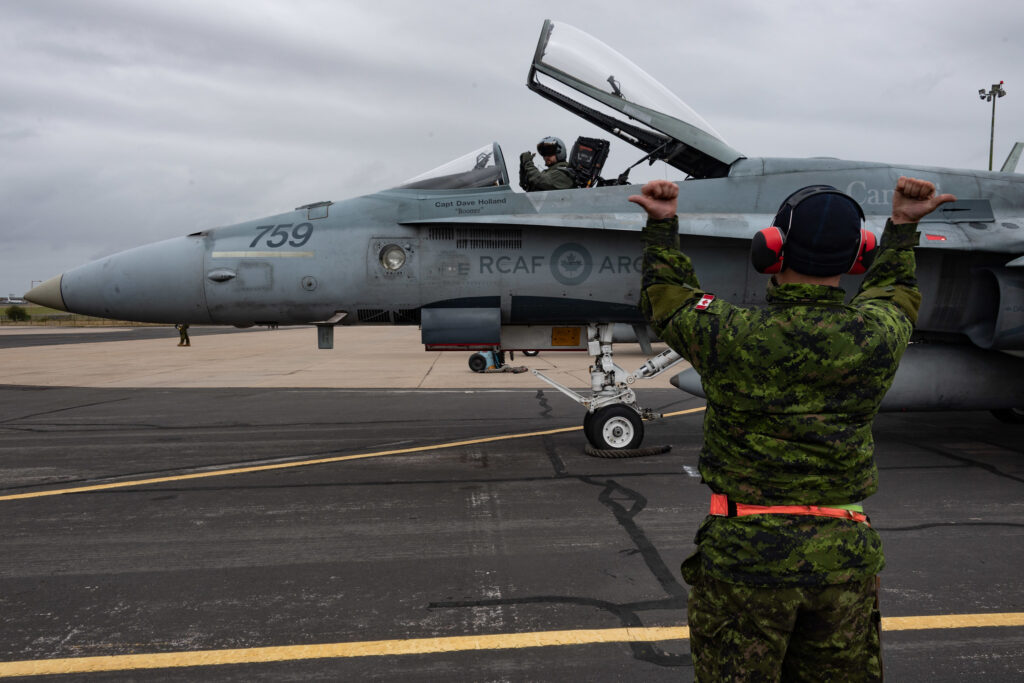

Cobra Warrior is a combined force exercise, drawing together different platforms and employing them to their strengths as part of a large air package. Establishing integrated practices with next-generation platforms is a key training benefit. But for the RCAF, it is also confirmation of the future. Canada has selected the F-35A to replace the CF-188 and is set to received its first four, of a planned 88, in 2026.
“I think it is important to reiterate that although we have a fourth-gen platform, we are still a very capable ally as a part of a coalition,” said Gazer. “We look forward to flying a fifth-generation fighter and we’re very happy to be here to offer assurance to Central and Eastern Europe.”
Skies was invited to join a 435 Squadron crew on a refueling sortie in support of Cobra Warrior. Unfortunately, due to weather conditions in the exercise area, the planned launch of CF-188s was cancelled. However, the Finnish Air Force was able to participate with the tanker crew, conducting two aerial refueling serials for four F-18s.
Having a dedicated refueling platform co-located with the fighters that use probe and drogue refueling meant crews could co-ordinate face-to-face (an RAF F-35B was also refueled during one sortie). This is not a typical arrangement. Tankers often fly from alternative locations to support fighters/strike aircraft. The Cobra Warrior arrangement meant both Canadian and Finnish pilots were able to establish and strengthen working relationships.
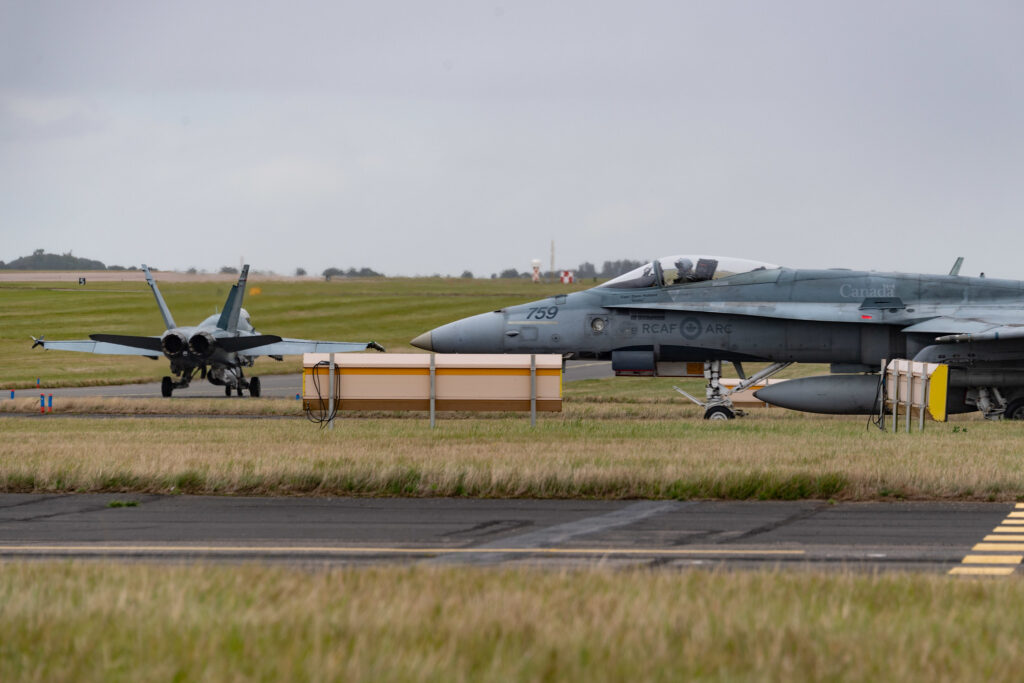

With Canada continuing to maintain a presence in Europe through Operation Reassurance, participation in exercises like Cobra Warrior is set to continue. It will be interesting to see how HEP2 Hornets will be employed in future iterations.


